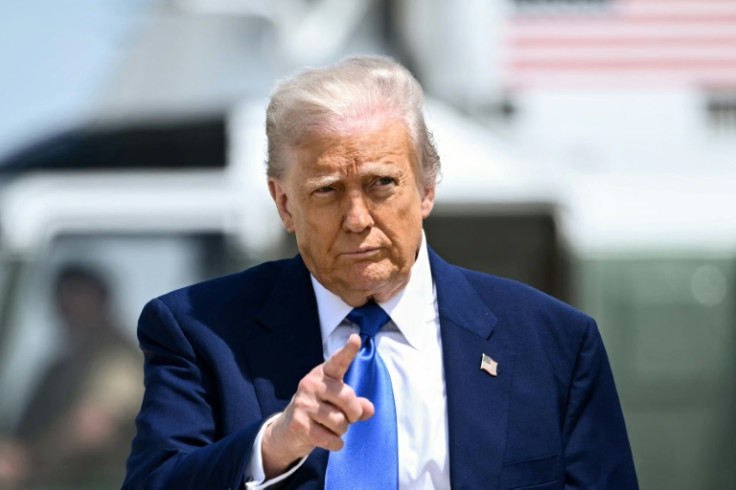Trump's Tax Reversal: Wealthy Face 39.6% Rate in Dramatic Policy Shift
US President's unexpected proposal targets ultra-wealthy Americans in bid to finance middle-class tax relief

In a surprising departure from his earlier tax-cutting agenda, US President Donald Trump is now advocating a significant tax increase on America's wealthiest individuals. The aim is to fund tax relief for the middle class and garner cross-party support ahead of the 2024 election.
Trump is proposing to restore the top federal income tax rate to 39.6%, up from the current 37%, targeting individuals earning at least $2.5 million (£1.96 million) annually. For married couples, the threshold would be $5 million (£3.92 million).
The proposal reportedly surfaced during a recent discussion with House Speaker Mike Johnson as Republicans begin shaping a new tax-and-spending package. This shift comes ahead of the 2025 expiry of key elements of Trump's 2017 Tax Cuts and Jobs Act.
Middle-Class Focus
Trump's plan seeks to generate revenue from the wealthiest Americans to offset tax cuts for middle-income earners. Analysts suggest this is a strategic pivot to present a fiscally responsible image and appeal to voters across the political spectrum.
The reversal is notable.Trump reduced the top individual rate from 39.6% to 37% and prioritised corporate tax cuts. Now, amid rising inflation and federal debt, he appears to be recalibrating towards a more balanced fiscal stance.
Sources say Trump is also calling for the elimination of the carried interest loophole,a tax break widely used by hedge fund and private equity managers. Closing it would align him with long-standing Democratic calls for fairer tax policy.
Divided Republican Response
Reactions among Republicans are mixed. Some support the idea of a 'millionaire's tax' to enable broader tax relief, while others argue it could deter investment and contradict core conservative principles.
Speaker Johnson has yet to publicly endorse the plan, and behind closed doors, negotiations among Conservative lawmakers are still ongoing. The proposal has sparked debate within the party, highlighting divisions between traditional fiscal conservatives and those more closely aligned with former President Donald Trump's populist economic agenda. Despite the absence of official backing from party leadership thus far, Trump's influence within the Republican Party remains undeniably strong. Many lawmakers appear to be treading carefully, weighing their positions as the 2024 presidential race gains momentum and Trump's presence continues to cast a long shadow over the party.
Among those expressing support for the proposal is Steve Bannon, Trump's former chief strategist and a prominent advocate for the America First movement. Bannon praised the plan as a 'bold move to rebalance the tax system,' emphasising its potential to shift economic power back to the working class. 'This shows Trump is serious about helping working Americans,' Bannon stated, framing the initiative as a clear indication of Trump's commitment to economic reform and middle-class priorities in the run-up to the election.
Implications for High Earners
Financial experts are urging wealthy Americans to begin preparing for possible tax changes. Those expecting to earn more than $2.5 million in 2025 may face significantly higher tax liabilities.
Tax advisers recommend:
- Accelerating income into 2025, ahead of any changes.
- Delaying deductible expenses until 2026.
- Reassessing investments, particularly those affected by the carried interest loophole.
'This could be the most significant tax shift since 2017,' said a New York-based accountant. 'Clients should be proactive, not reactive.'
Political Strategy or Economic Reform?
Trump's proposal could redefine party positions on taxation. By presenting the plan as a measure to aid the middle class, he may appeal to both populist and fiscally conservative voters.
However, critics suggest the move is more about image than policy. 'Trump wants to look pragmatic ahead of 2024,' one Democratic strategist commented. 'But his record still includes massive tax cuts for the wealthy.'
Whatever the motive, the plan has injected new energy into Washington's tax debate, as lawmakers prepare for a pivotal fiscal year.





















